

Berthon Winter Collection

Latest issue

August 2024
In the August 2024 issue of Yachting World magazine: News Few finish a tempestuous Round The Island Race European rules are eased for cruising to France and Greece Olympic sailing…

Yachting World
- Digital Edition

Revolutionary Gitana 17 trimaran to foil solo across oceans at 50 knots
- Elaine Bunting
- July 20, 2017
The most radical of the new Ultime trimarans, the incredible Gitana 17 is designed to foil at over 50 knots and cross up to 900 miles a day, crewed by just one solo skipper. Elaine Bunting talked to designer Guillaume Verdier at the launch

A revolutionary 100ft fully foiling oceangoing trimaran capable of covering more than 900 miles in a day and sailing at speeds of 50 knots was launched in Lorient this week. Designed by Guillaume Verdier, the foil genius behind the America’s Cup winning Emirates Team New Zealand , Gitana 17 is designed to be sailed solo and to beat the round the world record.
Gitana 17 is the latest of the race boats backed by Baron Benjamin de Rothschild. The 100ft ‘Ultime’ trimaran is the culmination of three years of work by the team and brings together developments from areas as diverse as the Vendée Globe IMOCA 60s, the America’s Cup and the MOD70 trimarans.
This is a beast of a boat and significantly different from others in the growing ‘Ultime’ development class such as François Gabart’s Macif and Thomas Coville’s Sodebo . For the first time, this is a boat designed around foil performance.
According to the design team, Gitana 17 will be able to foil at speeds of 48-50 knots in 16-25 knots of true wind and seas of 6-8m – typical Atlantic conditions. It could also sail across the Southern Ocean in non-foiling mode at up to 40 knots.
“Foiling is not that [hard] but to do that and be stable in waves is a lot more difficult and this is a first stage to doing that,” explained Guillaume Verdier. “Previously the boats were designed to go offshore and slowly the foils got into that, but we have designed the appendages as a principal [part] and tried to have a platform that goes well with that.
“It makes a boat that is a little heavier because there are more systems to control the foil, more hydraulics and the platform is stiffer in torsion.”

Launched on 17 July from Multiplast, Gitana 17 is the new Ultime class built for Baron Edmond de Rothschild.
The foils on Gitana 17 share some common thinking with those on the America’s Cup boats – the outer float foils are an L-shape. The main daggerboard on the central hull, however, is a shape never seen before on these boats and features a large horizontal component to help with roll control.
The concepts were evolved through 2014 and 2015 on Gitana 15 , the MOD70 now known as Giovanni Soldini’s Maserati . The team fitted one hull with several foil shapes to understand their performance offshore. “One of the issues we had was that it was fairly unstable, rolling-wise, and an elevator on the stern [alone] would not be enough for singlehanded control. So we introduced this element, which is draggy but will help a lot,” explained Verdier.
The T-foil rudders on the outer hulls are an ingenious and complex solution and designed by the Gitana team. They feature elevators to adjust trim and are operated by hydraulic system monitored by electronic software. But they can also kick up if they collide with something in the water, and be raised out of the water.
The windward rudder is very exposed to slamming from waves when reaching, so can be lifted up, locked into the hull and disconnected from the control systems. A large housing that you can see in the photo below protects the rudder and controls.
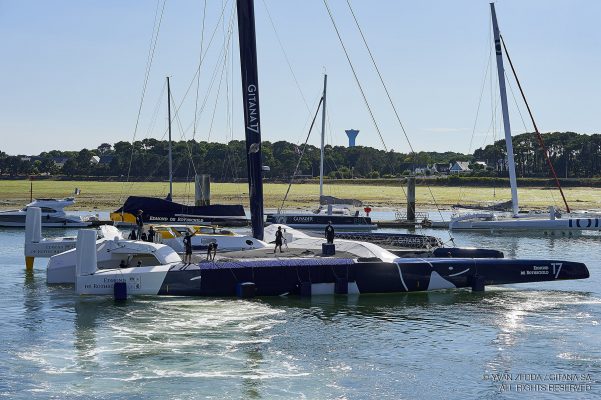
Gitana 17 has the mast stepped in Lorient
Verdier says that these rudder foils are “a bit like the AC72 foils; they are auto-stable”.
He explained: “They behave a bit like a helicoil. When the boat raises up in the water it makes more leeway, and when it makes more leeway there is a component of the force that pushes you down. But the difference [with the America’s Cup boats] is that this is a huge foil compared to any other boat in the past.”

The 100ft Gitana 17 is designed to foil trans-ocean solo
According to Verdier, Gitana 17 could one day foil at more than 50 knots. “But when foiling we are limited by cavitation, so if wanted to go above that we’d need to have different profiles and aerodynamic aspects, and structure of the boat. It’s a bit of an unknown territory, but maybe we should be able to do 53 or 54 knots.”
The main aim of the designers, however, is to improve the boat’s average high speed potential, and Verdier says that Gitana 17 could reach 900 miles in 24 hours – the much bigger fully crewed 130ft catamaran Banque Populaire V holds the record of 908 miles. This could be an ultimate record-breaker, though the quiet-spoken French designer hesitates to say so. “I could pick any crazy number,” he smiles. “It’s pretentious to say. We have to wait a little.”

A maxi trimaran for Edmond de Rothschild
Construction: 2016 Launch date: July 2017 Shipyard: Multiplast / Lorima / Persico Architects: Team Verdier (Guillaume Verdier, Morgane Schlumberger, Hervé Penfornis, Romaric Neyhousser), Bobby Kleinschmit (Team New Zealand), Bureau d’études Gitana (Antoine Koch, Marine Villard, Sébastien Sainson, Armand de Jacquelot, Julien Marcelet), Pure Design Skipper: Sébastien Josse Racing program: solo-racing
@gitana-team.com
A trimaran measuring 32-metres in length and 23 metres in width, this ‘Ultime’ once again bears witness to the passion for innovation and performance, that serves as a daily guide to Ariane and Benjamin de Rothschild and the rest of the Gitana Team. They created the offshore racing stable in 2000, ensuring continuity with the team that has undertaken research and assisted with the development of the Multi70 Edmond de Rothschildl, since 2014.
Designed by Guillaume Verdier, alongside his team and the Gitana design office; the Maxi Edmond de Rothschild will be partly Archimedean boat (submerged hull) and flying craft. Gitana Team’s game plan is to develop the first flying maxi-multihull in offshore racing, by 2020.
@Gitana-team.com
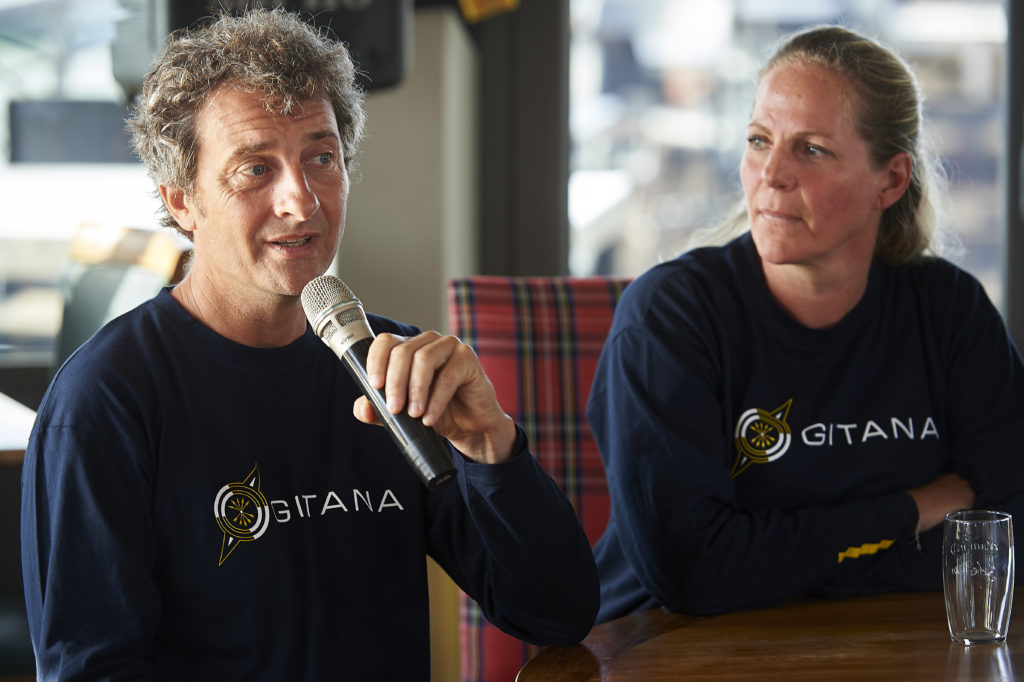
Vannes le 17 juillet 2017, chantier Multiplast, sortie et mise à l’eau du Maxi Edmond de Rothschild.
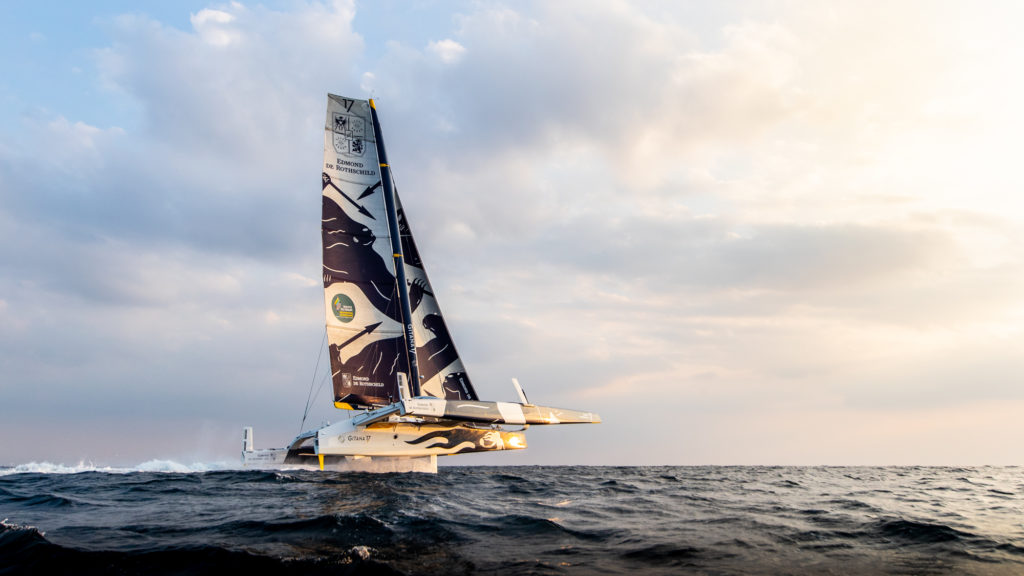
@Eloi Stichelbaut/ GITANA SA
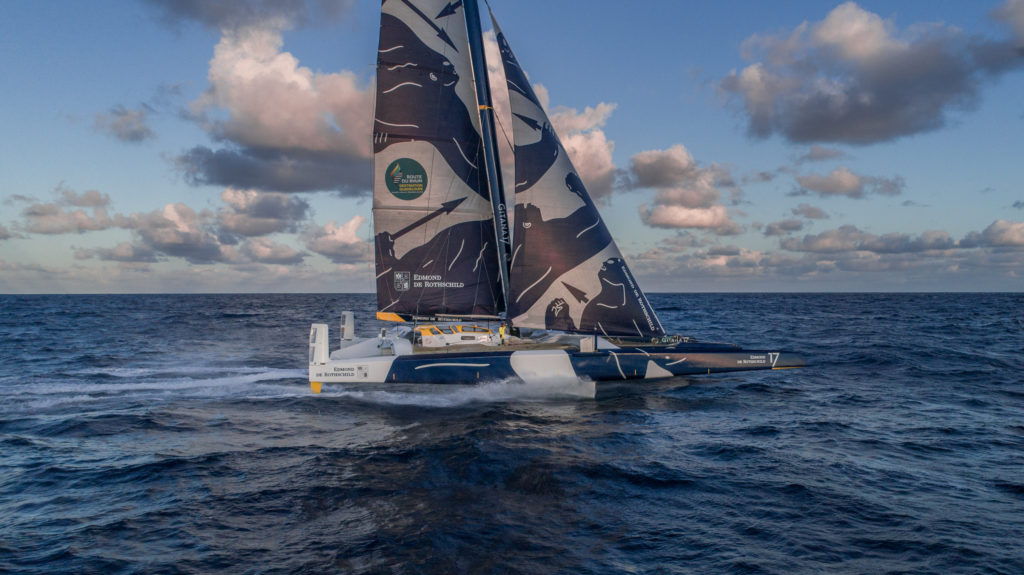
Specifications:
- Length: 32 m
- Draught: 37 m
- Displacement (weight) : 15.5 tons
- Appendages : T-Foil Float Rudders (2) / L-Shaped Foils (2)/ Daggerboard on the central Hull (1) / T-Foil rudder on central hull (1)
- Sail area upwind: 450 m²
- Sail area downwind: 650 m²
Related articles:
“Gitana 17, it’s intense”
A maxi trimaran of a new generation
More projects ULTIMATES :
2018 – trimaran multi 70 – maserati, 2016 – maxi trimaran – gitana 17, 2016 – foiler – easy to fly, 2014 – 100 feet – comanche, 2012 – multi 50 pieds – arkema.


Published on January 11th, 2023 | by Editor
Gitana 17: World’s coolest yachts
Published on January 11th, 2023 by Editor -->
Yachting World has been asking top sailors and marine industry gurus to choose the coolest and most innovative yachts of our times, and Johan Salen nominated Gitana 17. Here’s the report :
“The Ultimes to me are the most technologically advanced and fastest boats that you can still go offshore with, at incredible speeds and at the same time a robustness and all round performance: 30 knots upwind on the ocean! So I think they are technically the peak of sailing at the moment,” says Salen, who nominates the giant trimaran Maxi Edmond de Rothschild, also known as Gitana 17.
Gitana 17 is a 32m fully foiling trimaran built to a Verdier design to compete in both crewed (by a team of six) and solo races and record attempts. Skippered by Charles Caudrelier, it has won the Rolex Fastnet Race, Transat Jacques Vabre and Brest Atlantiques.
“Gitana in particular, even though it’s not the most recent Ultime, has very good sailors who have constantly been evolving it so that at the moment it is the most optimised boat,” continues Salen.

“It’s so big and powerful, and to see the whole thing up in the air is really incredible.”
Gitana 17 stats rating Top speed: 50.7 knots LOA: 32m/104ft Launched: 2017 Berths: 1-3 Price: c.€12million Adrenalin factor: 98%
For Yachting World’s list of cool boats, click here .

Tags: coolest yachts , Gitana , Johan Salén , Ultim Class , Yachting World
Related Posts
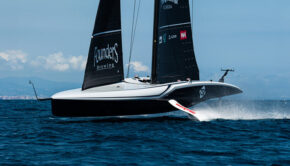

Will USA’s radical design choices pay off? →
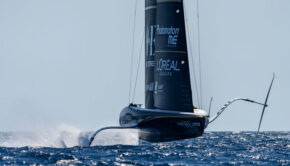
Who is the quickest America’s Cup team? →

Trickle down of clothing technology →
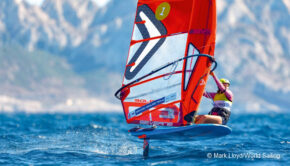
Assessing the favorites for Paris 2024 →
© 2024 Scuttlebutt Sailing News. Inbox Communications, Inc. All Rights Reserved. made by VSSL Agency .
- Privacy Statement
- Advertise With Us
Get Your Sailing News Fix!
Your download by email.
- Your Name...
- Your Email... *
- Email This field is for validation purposes and should be left unchanged.


The global authority in superyachting
- NEWSLETTERS
- Yachts Home
- The Superyacht Directory
- Yacht Reports
- Brokerage News
- The largest yachts in the world
- The Register
- Yacht Advice
- Yacht Design
- 12m to 24m yachts
- Monaco Yacht Show
- Builder Directory
- Designer Directory
- Interior Design Directory
- Naval Architect Directory
- Yachts for sale home
- Motor yachts
- Sailing yachts
- Explorer yachts
- Classic yachts
- Sale Broker Directory
- Charter Home
- Yachts for Charter
- Charter Destinations
- Charter Broker Directory
- Destinations Home
- Mediterranean
- South Pacific
- Rest of the World
- Boat Life Home
- Owners' Experiences
- Conservation and Philanthropy
- Interiors Suppliers
- Owners' Club
- Captains' Club
- BOAT Showcase
- Boat Presents
- Events Home
- World Superyacht Awards
- Superyacht Design Festival
- Design and Innovation Awards
- Young Designer of the Year Award
- Artistry and Craft Awards
- Explorer Yachts Summit
- Ocean Talks
- The Ocean Awards
- BOAT Connect
- Between the bays
- Golf Invitational
- BOATPro Home
- Superyacht Insight
- Global Order Book
- Premium Content
- Product Features
- Testimonials
- Pricing Plan
- Tenders & Equipment
Video: Flying on the world’s largest foiling trimaran
Sailing team Gitana has released an on board video showing its new 32 metre maxi trimaran Edmond De Rothschild flying on her hydrofoils. As the footage below shows, all three hulls were lifted clear of the water on her sea trials despite weighing a total of 15.5 tonnes.
Speaking after a successful day on the water, Sébastien Josse of Gitana said, “We immediately saw that the boat was keeping her promises: stiff and safe and begging to unleash her power. The first time the boat took off was an incredible moment.
“We had 15-17 knots of breeze and flat seas, with waves of less than a metre — everything was in place to fly. Aboard the boat there was a mixture of excitement and surprise, as well as pride,” he added. “Even though we're only at the start, it's hugely satisfying to see that we're heading in the right direction.”
Launched back in July in the French port town of Vannes, Edmond De Rothschild has spent three years in development. Continuing their family’s sailing legacy, namesake descendants Ariane and Benjamin de Rothschild were involved in the fit-out stage.
Built for speed, she lacks the creature comforts found on a multihull superyacht , but with an LOA of 32 metres, Edmond De Rothschild is the largest purpose-built foiling trimaran in the world — and more than double the length of the AC45 racing catamarans that competed at the America's Cup in Bermuda earlier this summer.
The ultimate aim is that Edmond De Rothschild will singlehandedly circumnavigate the globe in 2019-20. Before then, the team has set the intermediary goal of racing in the 2017 Transat Jacques Vabre, which departs from Le Havre on November 5.
Foiling technology was thrust into the global spotlight in 2013 during the 34th America’s Cup in San Francisco and with the format of the 36th America’s Cup still undecided it is likely that the Royal New Zealand Yacht Squadron will be watching these developments with great interest.
Sign up to BOAT Briefing email
Latest news, brokerage headlines and yacht exclusives, every weekday
By signing up for BOAT newsletters, you agree to our Terms of Use and our Privacy Policy .
More stories
Most popular, from our partners, sponsored listings.

- AMERICA'S CUP
- CLASSIFIEDS
- NEWSLETTERS
- SUBMIT NEWS

The Gitana lineage continues
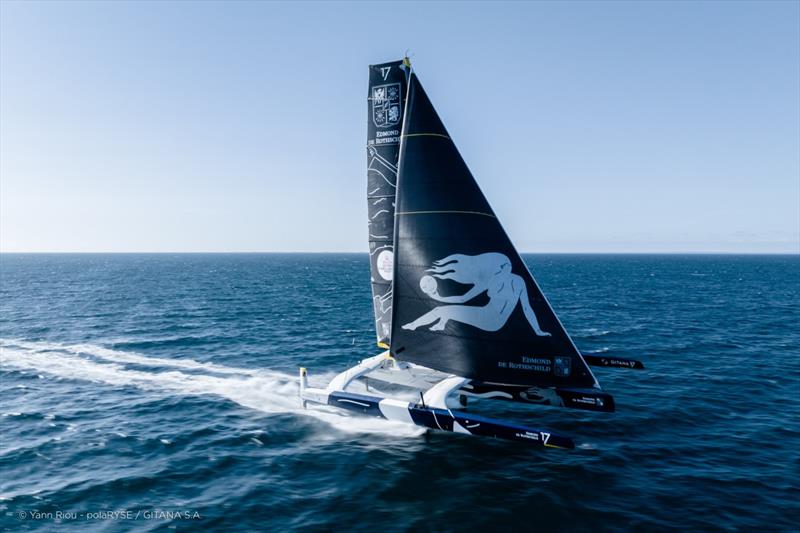
Related Articles
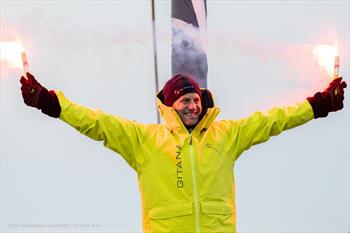

Gitana 17, large flying offshore trimaran
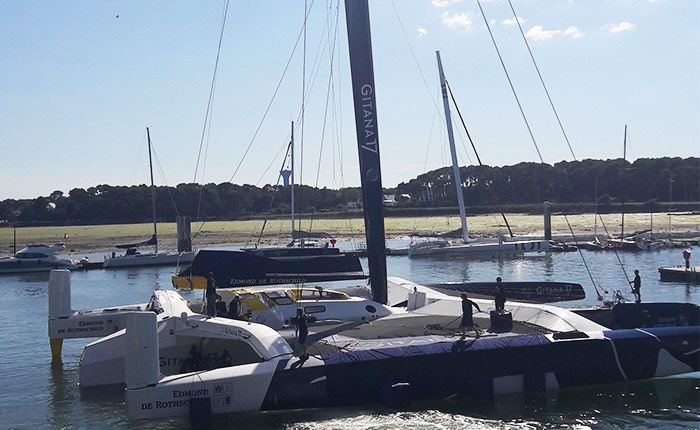
The maxi trimaran Gitana 17 Edmond de Rotshild of the Gitana team, precursor of a new generation of multihulls designed to glide and fly offshore, has joined its home port in Lorient.
The Gitana 17 and its skipper Sébastien Josse , who entered the first edition of the Brest World Ultim Tour in 2019, will take part in the Transat Jacques Vabre in November 2017 and the Route du Rhum in 2018.
Guelt Nautic is proud to have taken part in this great technological adventure with the machining of the mast base of a 32-metre long, 23-metre wide and 37-meter high giant carbon mast.
Learn more : Gitana Team
The legendary boats
Gitana was ordered by Baroness Julie de Rothschild in 1875, the 37th boat to be built by Thornycroft since the foundation of the yard in 1866 – hence file number 37 for the papers conserved in the Thornycroft archive at the Royal Arsenal, Woolwich.
This was the first boat to bear the name Gitana , built entirely in steel and steam-powered, constructed on the banks of the River Thames in the London suburb of Chiswick. Her length was 24.45m, her beam 4.11m and she was delivered to Switzerland in parts, because it was not practical to navigate the River Rhine with this long boat. The ship was assembled not far from Lausanne, at Morges on Lake Geneva, at the yard of the Compagnie Générale de Navigation.
Gitana was fitted with a steam engine intended to drive her at 50kph. That promise was never fully achieved, but it was enough to earn the baroness her title of “fastest yachting lady in the world”, with a speed of 20.5 knots on Lake Geneva, a top speed of nearly 38kph – this on Gitana’s first outings in the course of constructor trials. The cruising speed of the boat was essentially around 18 knots, close to 33kph.
On 3 April 1879, Gitana confirmed her 20.5 knot world speed record in a race against the Winkelried, a boat belonging to the Compagnie Générale de Navigation.
The baroness sold this founding symbol of the Gitana saga in 1902 to Robert Thorens, one of her crew. She was renamed Minerve and converted to a fully operational cargo ship. Caught in a violent storm in November 1913, she was lost forever in Lake Geneva, at the top of Corzent (now Thonon-les-Bains). Her wreck remains there to this day.
At the close of the 19th century, Baroness Julie de Rothschild ordered a new steam ship. She now had twenty years’ experience of sailing on Lake Geneva, and was eager to beat her rivals. Her choice of supplier this time was the French constructor Augustin Normand, who built her a boat 37m long.
Gitana II was built in Le Havre and transported across the Jura in pieces like her predecessor. Her engine featured all the latest refinements and the hull shape was designed to draw the stern downwards, for greater forward power. Gitana II quickly proved her mettle, recording a new speed record in her first year of sailing, in 1898.
The record was set on Lake Geneva, between Coppet and Saint-Pres, covering a distance of 27,643 metres, starting at the south-west end of the lake on a line defined by the Coppet clock tower and the top of the Dôle. The finish to the north-east was marked by the end of the wharf at Saint-Prex, near Morges. She completed this speed trial fully laden, including 3.5 tons of coal. The time on her outward run was 34 minutes and 12 seconds; 34 minutes and 36 seconds on the return. Average speed was 26.34 knots or 48.215kph.
Gitana II was made large enough to serve as a comfortable and spacious yacht, suitable to receive the many guests who had a mind to steam around the lake. Accommodation included a roof saloon, a rest saloon reserved for ladies, two WCs, a kitchen and an office.
In the 1960s–1980s, Baron Edmond de Rothschild revived a family interest for cruising yachts and took a shine to monohulls. In 1960, he purchased Gitana III, a large steel ketch measuring 20.34 metres in length designed by F. Mulder and N.A Van Malleghem. Not especially adept at sailing close to the wind and slow downwind, Gitana III was really a ‘slow’ cruising boat. Blowing the trumpet for lazy days and a fan of old-fashioned ‘square sails’, Gitana III was certainly the catalyst for the Baron’s passion for sailing. Aboard this boat, Baron Edmond de Rothschild discovered the enjoyment of racing and gained the recognition of other sailors.
In the autumn of 1961, Baron Edmond de Rothschild paid tribute to the spirit of his ancestor Julie and commissioned a fabulous racer-cruiser: Gitana IV . On the advice of his friend Gianni Agnelli, the baron chose Cesare Sangermani to build her, at the Sangermani yard on the Ligurian coast at Lavagna, not far from Portofino in Italy.
Cantieri Sangermani are gifted boat builders who have been building sailing boats since 1896, and their all-wood creations are real gems. Gitana IV , a 27.57m yawl, took a year to build and was launched in July 1962.
More comfortable and faster than her predecessor, Gitana IV distinguished herself many times over. With a crew of friends and yachtsmen from Carantec, Baron Edmond posted a series of solid performances in Mediterranean events: the Giraglia, for instance, a race that started in 1953 and grew to be one of the most notable fixtures on the Mediterranean calendar. But it was international fame that would set this monohull apart, in the English races of the Royal Ocean Racing Club (RORC) and notably the most famous of them all: the Fastnet Race. In 1965, the baron and his men brought considerable renown to the Gitana name with a Fastnet race time of 81 hours and 40 minutes (3 days, 9 hours and 40 minutes); a record they would hold for nineteen years.
Better suited to modern races, Gitana V was an aluminium Class I designed by the American naval architect Dick Carter and built at Abeking and Rasmussen in Germany. A very fast monohull downwind, she was handicapped when sailing upwind by an overly flexible mast. In 1971, whilst a member of the French Admiral’s Cup team, the yacht demonstrated her prowess in the Channel Race. The following season, thanks to the modifications made to her rig, which greatly improved her upwind performance, Gitana V secured a very honourable track record in the Mediterranean.
Her predecessor Gitana V was an 18 metre aluminium monohull designed by Dick Carter and launched in 1971. She performed well off the wind, but suffered serious shortcomings sailing close-hauled. So in 1974, Baron Edmond asked the American naval architects Sparkman & Stephens to design him a new boat. Plans for a 20 metre sloop with aluminium hull and teak deck were drawn up by designer Olin Stephens. Gitana VI was built at the Royal Huisman yard in Vollenhove, Netherlands, and launched in the spring of 1975.
Gitana VI entered many races: Cowes-Dinard, Channel Race, Cowes Week, Fastnet Race, Giraglia, Middle Sea Race, Semaine Nautique Internationale de Marseille (SNIM)... Events followed one after the other at an extraordinary rate, across a period of more than ten years. Built for racing, Gitana VI was also a formidable cruising boat: for instance, sailing to the West Indies, which Baron Edmond’s son Benjamin especially enjoyed. It was also on board Gitana VI at Saint-Barthélemy that Benjamin introduced his father to the woman who would become his wife several years later. Ariane Langner.
This monohull left a lasting impression on a whole generation of yachtsmen and women. It is also one of the Rothschild family’s favourite boats. An important symbol of the Gitana story, she now forms part of the Gitana Team stable alongside the modern day racing multihulls and monohulls.
Designed by the naval architect German Frers and built by the British yard Martland Marine, Gitana VII was an aluminium two tonner. Originally built to participate in the selection rounds for the Admiral’s Cup 1979, the monohull quickly had to abandon any vague desires of making the start line following some complicated issues with her finish and the class measurement. Once these problems had been resolved, Gitana VII took part in the Two Ton Cup races 1979, which she won. This victory earned the Baron a quip from a sailing journalist: “Honour to whom Two Tonner is due, Baron Edmond de Rothschild has won again.”
At the beginning of the 1980s, Jean-Pierre Odéro relaunched the Cannes Royal Regatta. At the time, this event represented the grand finale of the racing season, and the prestigious 6 metre international class (6mJI) gave it all the sense of occasion it needed.
The idea was bound to attract Edmond de Rothschild who decided, in 1981, to commission the Sparkman & Stephens firm to design him his own 6mJI. Construction was placed in the hands of the Swiss yard Egger.
Named Gitana Senior , this monohull was a moulded wood construction, with a most elegant varnished mahogany finish. It was known as “the piano” on account of its gleaming appearance. Gitana Senior enjoyed an especially busy programme of events every year, competing many times at The Cannes Royal Regatta and a real character in the spring races on Lake Geneva. She also competed in World and French 6mJI Cups, and also European championships. In 1986, she won the French 6mJI Cup.
A saga within the saga, the 6mJIs held an important place in the history of the Gitanas. It all began in 1981, when Baron Edmond de Rothschild treated his son to a 6mJI designed by Swede Pelle Petterson: Gitana Junior I. In this demanding and sporty metre class, Benjamin de Rothschild would be joined the following year by his father at the head of the crew of Gitana Senior . Subsequent boats included Gitana Junior II – created by Briton Ian Howlett –, and Gitana Junior III – built by the Swiss Philippe Durr according to designs by his compatriot Jean Grobéty. Like twins, Gitana Senior and the Gitana Juniors would take part in a variety of 6mJI events, the crews behaving like enemy brothers during competition, but rekindling their ties once the finish line was crossed.
In 1984, it was Edmond de Rothschild himself who launched the A Class – known as Maxis – rallying the other owners of big yachts around his idea. As originator and founder, he was first president of the class, with his friend and crewmate François Carn as secretary general.
To mark the event, Baron Edmond commissioned Gitana VIII , a monohull of 21 metres, and therefore a “mini-maxi”. This new boat was designed by the Argentine Germán Frers, already designer of Gitana VII, a 12 metre aluminium two-tonner with which the baron won the Two Ton Cup in 1979. Gitana VIII was built by the Ambrosini yard on the Italian Adriatic coast close to Ravenna.
Gitana VIII was the first boat in the maxi saga, and sistership to Il Moro di Venezia II , the second in another illustrious line of boats belonging to the businessman Raul Gardini, then president of the Ferruzzi industrial group.
Gitana VIII featured an aluminium hull, carbon deck, titanium winches, and a very restrained interior fit-out, as light as possible for maximum performance.
She made her mark on the period in the great Mediterranean classics such as the Giraglia, and confirmed her reputation in 1984 by winning the Nioulargue. Baron Edmond and his skipper Harold Cudmore dominated that year. (One of those they left in their wake was a certain Éric Tabarly, at the helm of the maxi Coriolan IV ...) The Nioulargue was the forerunner of Les Voiles de Saint-Tropez, now an unmissable international sailing event that draws together prestigious maxi yachts, high-tech prototypes and classic sailing boats in the Bay of Pampelonne each year in September/October. The Edmond de Rothschild Group has been a partner to this famous race since 2013.
Cannes has a long association with racing and the metric classes. In 1986, the Rade de Cannes welcomed the 6mJI World Cup; and Jean-Pierre Odéro, who had relaunched the Royal Regatta, announced at that time that the boats of the 8mJI class would also go on to dispute their world title on the waters of the Côte d’Azur the following year. Edmond de Rothschild was immediately persuaded to take part.
By happy coincidence, 1986 was also the year of the baron’s sixtieth birthday! The idea of a new boat for the race was irresistible. This would be Gitana Sixty, an 8mJI by Cannes designer Jacques Fauroux, built in the yard of Universal Yachting at Carros under the supervision of Jean-Hervé Mer – a monohull with all the breeding of its owner, a jewel of elegance! With a crew led by Philippe Durr, and Benjamin de Rothschild there among them, she reigned unchallenged on the waters of Cannes, winning race after race and securing the title ahead of her six rivals.
Victory was celebrated at the restaurant Au Mal Assis, where on a roll of tablecloth the crew had secretly created a 60 metre long banner on which was written a huge “Happy birthday and thank you, Edmond!” Benjamin de Rothschild then addressed his father. “You see, Papa, for your sixtieth birthday, I don’t know what present to get for you. You have everything, and you can have nearly anything. So here’s a present that money cannot buy, that we have won for you. The World Cup. I give it to you.”
Amidst the enjoyment of cruising on Gitana VI and the delights of competitions on Gitana Senior, Baron Edmond de Rothschild was lacking a boat able to be sailed single-handed and enabling him to really relish the waters of Lake Geneva. In 1990, to satisfy his passion for boats without racking up the miles or the crews, the Baron acquired the Gitana Grand Soleil at the boat show: a cruising monohull.
In the nineties, Baron Benjamin de Rothschild invested in a Formula 40, a 40-foot competition catamaran, whose name was a slight departure from Gitana tradition, since it went by the title, Force Cash . It was aboard this boat, during numerous years of catamaran sailing on Lake Geneva that the owner of Gitana Team discovered the delights of slipping along in a multihull. Today, Force Cash is a dedicated platform on the lake for teaching sailing to the LCF Rothschild Group’s associates and to external guests who are new to the sport.
This 60 foot (18.28m) trimaran was built in the Multiplast yard in Vannes in 1988 to plans drawn by Gilles Ollier, and she has lived several different lives in her time... She was originally named Elf Aquitaine III , then Harris Wilson , then Laiterie de Saint-Malo before becoming Gitana IX in 1999, when she was acquired by Benjamin de Rothschild. This was the boat that would be the young baron’s introduction to the big arena of offshore multihulls – and the start of a new succession of Gitanas.
At the end of the 1980s, the boat had enjoyed an astonishing career under the name of Elf Aquitaine III . Skippered by Jean Maurel, she won the 1988 Transat Québec-Saint-Malo in the 60 foot category, then was winner in the transatlantic Lorient-Saint-Barthélemy race in 1989 and the Two Star in 1990, with further successes in numerous Multihull Trophy and Grand Prix events. This was certainly an original boat: a clever compromise between an offshore trimaran and a large Formula 40. Not very wide, she had beams that could be dismantled so she could be transported in parts by sea.
She was considered to be a “good boat”, but her acquisition in 1999 was not primarily motivated by the prospect of podium places. The role of Gitana IX was more about giving the team an apprenticeship in the multihull class.
It was the performance of this boat, notably in the Transat Québec-Saint-Malo 2000 and the 2001 Challenge Mondial Assistance that gave Baron Benjamin an enduring passion for these carbon dragonflies.
In her own way, Gitana IX contributed to the launch of the incredible multihull saga that continues today. Sold on in 2006, she is still sailing and still features on the start line for major races like the Route du Rhum.
Gitana X was the first boat built to order for the Gitana Team under Benjamin de Rothschild. Construction was carried out by the Multiplast yard in Vannes, and completed in June 2002.
The Gitana X design was the product of a close collaboration between four design studios: Gilles Ollier ( Elf Aquitaine III , Club Med , Innovation Explorer ), Duncan MacLane ( Stars and Stripes ), Sébastien Schmidt ( Alinghi ) and Mario Caponnetto. Together they produced one of the most original trimarans in the ORMA fleet at the time. Gitana X featured banana-shaped floats and an X-beam structure that centred the weight and gave extra stiffness to the platform. The design also provided for a very large cockpit, which is ideal for manoeuvring.
Gitana X featured all the very latest innovations of the period, including curved foils, a mast that canted lengthwise and laterally, a daggerboard with a trim tab and sails in Cuben Fiber.
Initially skippered by Lionel Lemonchois, the helm then passed to Marc Guillemot in 2004, then to Thierry Duprey du Vorsent in 2005 (who was tasked with the equally important mission of training up young talent).
This trimaran is one of the emblematic multihulls from the golden age of the ORMA class. Launched under a Belgian flag in 2001, she was named Belgacom until she was bought three years later by Baron Benjamin de Rothschild, to diversify the Gitana fleet and bolster the rising power of the stable. The chief role for her predecessor Gitana X was to serve as a training boat dedicated to developing young talent. This boat, Gitana 11 , was intended to win medals.
Successively skippered by Frédéric Le Peutrec, Lionel Lemonchois and Yann Guichard, Gitana 11 was to post a series of significant results and place the Gitana name among the honours in numerous races. But her finest hour was surely in November 2006 with her towering victory in the legendary Route du Rhum, recording a crossing time that remained unbeaten for eight years.
The name Gitana 11 does in fact apply to two boats. Never being afraid to undertake a major refit, the Gitana Team actually modified this multihull in two stages to improve performance. During the winter of 2005-2006, the central hull was cut to a level 50 centimetres above the waterline. A new hull section was grafted on below and a new daggerboard casing was introduced. The cockpit was also redefined and the reinforced floats were fitted with curved rather than the standard straight foils.
Then in 2009, the organisers of the Route du Rhum announced that the 2010 edition would be opened to Ultime category boats. With this in view, the Gitana team decided on further modifications to Gitana 11 , lengthening her by 17 feet to create a 77 foot (23.51m) maxi-multihull.
Designed by VPLP yacht design, this 60-foot trimaran belongs to the ORMA class (Ocean Racing Multihull Association). Ex-Bonduelle, Gitana 12 is emblematic of the trimarans from the start of the 21st century: very beamy, pre-impregnated carbon structure, raised beams and high volume floats…
Built in 2000, this 18.28-metre multihull was originally Jean Le Cam’s Bonduelle. Purchased by the Gitana Team in 2005, she became Gitana 12 and underwent a thorough rejuvenation before joining Baron Benjamin de Rothschild’s fleet: revised deck layout, larger cockpit, revamped interior (electricity, electronics, hydraulics…), altered daggerboard casings and rig and a new set of rudders. Like one of her predecessors, Gitana X , the boat is used to train up a crew of young talent by participating in the Multi Cup events and the Route du Rhum in late 2006. She is skippered by Thierry Duprey du Vorsent.
Baron Benjamin de Rothschild acquired this 32.8m maxi-catamaran in 2006. Designed by Gilles Ollier and built in 1999, she belonged to the G Class family, “ancestor” of the Ultime category. This boat boasted a prestigious racing record. Launched in 2000 as Innovation Explorer , she was first skippered by Loïck Peyron for The Race, and took 2nd place in this “no limit” round-the-world challenge. In 2002, it was again a Peyron, this time Bruno, who took her around the globe under the name Orange , triumphantly seizing the Jules Verne Trophy in 64 days, 8 hours, 37 minutes – nearly a week better than the previous record. The following year it was the brilliant British sailor Ellen MacArthur who set off to challenge this legendary result, but the boat now renamed Kingfisher 2 fell victim to a dismasting in the Indian Ocean.
In 2006 the boat was renamed Gitana 13 by Benjamin de Rothschild, and completely revamped. Modernisations included the scaling up of the sail plan with a new 41 metre mast. In 2008, she commenced a great campaign of oceanic record breaking along some epic and historic shipping routes that had been neglected by modern day record hunters. In the course of nine months, from New York to London, by way of the Pacific and the coasts of Asia, the men of the Gitana Team criss-crossed the world’s oceans and covered nearly 40,000 miles. With seven attempts and as many records secured, the Gitana 13 campaign was a tremendous success.
The first monohull to have joined Gitana Team’s long line of racing yachts and effective as a return to basics in the Rothschild family’s maritime saga, the Domaine du Mont d’Arbois is a 10.10m one-design created by naval architect Marc Lombard.
Launched in 2003 in the colours of Groupe Bel, Thierry Duprey du Vorsent took over the Figaro Bénéteau 2 in 2007 to participate in all the events that make up the French solo offshore racing championship. That season, the yacht competed in a fine programme comprising a solo transatlantic, a double-handed Mediterranean event between Marseille and Istanbul and the famous Solitaire du Figaro – the star event of the circuit.
Baron Benjamin de Rothschild named his new boat Gitana Eighty to honour the memory of his father Edmond. The year of its launch
Designed by the Farr design office and built in New Zealand by Southern Ocean Marine, this 60 footer was a real concentration of clean-lined technology! Sistership to Jean-Pierre Dick’s Paprec-Virbac , she was packed with innovations with one major objective in view: the Vendée Globe 2008-2009.
The interior featured a unit called the “satellite” which consolidated the chart table, bunk and storage compartments, all mounted on a semi-circular track so the skipper could more easily shift the half-ton of materials – including food and safety gear – as necessary when tacking or gybing.
Another original feature of this monohull was a hull bottom with variable geometry built in, called a “trim tab”. Located right at the stern level with the rudders, this adjustment served to regulate the boat’s fore-to-aft trim, according to sea and wind conditions and the boat’s position in relation to the wind.
One final notable innovation was added to address ergonomic factors and the comfort of the yachtsman: the sliders. These two sliding panels, located between the mast and the aft platform, were conceived to optimise aerodynamics, to reduce water entering the cockpit and, thanks to its protective qualities, to minimise the energy expended by the skipper so he could trim his sails more often and more precisely.
Skippered by Loïck Peyron, Gitana Eighty shone in the various events of the IMOCA race schedule in 2007 and 2008, with an especially historic victory in The Transat. Ranked among the top favourites for the Vendée Globe 2008, Loïck Peyron was one of the main protagonists at the start of the race but was forced to retire after losing his mast in the Indian Ocean.
Gitana Eighty was sold in 2009 and renamed several times ( W Hotels , SynerCiel , Newrest-Matmut ...) She remains a very solid boat and still sails the globe contesting the major events of the IMOCA calendar.
Gitana Extreme, the Extreme40 Edmond de Rothschild , is a 40 foot one-design catamaran all in carbon, the child of a collaboration between Olympic Tornado champion Yves Loday and the
This boat is designed for sensitive trimming, and has one interesting distinction: she is entirely demountable and fits in a container equal to her length. She can then be reassembled and rigged in a single day. This means she can be transported to unusual sailing venues, of the sort that feature on the Extreme Sailing Series circuit.
Gitana Extreme is the expression of an idea, of an international circuit where dinghy sailing champions and offshore racers, irrespective of nationality, can compete side by side on equal terms. The Extreme Sailing Series was launched in 2007 on the initiative of OC Sport, and still enjoys great success. With a top-flight line-up, it has grown to become a reference circuit on an international level.
From the outset, the objective targeted by the competition’s organisers has been to give the public a close-up experience of the racing, and so to some degree democratize sailing – all in a resolutely spectacular ambience. That’s why this circuit always favours stretches of water close to shore, even sometimes in the heart of a city: in the canals of Amsterdam, for instance, or right at the foot of Sugarloaf Mountain and the Corcovado peak in Rio de Janeiro, or in the Turkish waters of the Bosphorus... It is a clever blend of competition and spectacle that is truly unique and reflects an approach that proved tremendously successful for the Gitana Team in early 2000 at the time of the multihull Grand Prix events.
The Extreme40 Edmond de Rothschild competed on the Extreme Sailing Series circuit for four consecutive seasons, from 2009 to 2012. Always at the head of the fleet, the team won a number of meetings and made it onto the podium at the annual championships. Gitana Extreme was beyond question one of the great protagonists of the Extreme Sailing Series.
Launched at the end of 2011, Gitana XV was largely inspired by the former multihulls of the ORMA class (Ocean Racing Multihull Association). She started out as a 70 foot one-design trimaran in the MOD70 class, originally intended for a one-design championship based around seven identical multihulls. In this guise she took part in the Krys Ocean Race fought out between New York and Brest, taking 2nd place. She also competed in a multihull tour of Europe.
In 2013, with no circuit available, the Gitana Team put together its own made-to-measure programme, including the ArMen Race, the Route des Princes, the Rolex Fastnet Race and the climax: Sébastien Josse and Charles Caudrelier paired up for the Transat Jacques-Vabre.
The following year, this multihull was adapted for singlehanded sailing, with a view to participating in the Route du Rhum’s main Ultime category. No longer strictly one-design, the boat went on to become the Multi70 Edmond de Rothschild, and underwent several transformations before it took to the famous Saint-Malo – Pointe-à-Pitre course. Ergonomic modifications were required to adapt the layout of the deck for singlehanded sailing, accompanied by significant alterations to benefit the boat’s performance.
In a bid to compete with the big trimarans in the Ultime class that measured between 30 and 40 metres in length, Gitana Team had the idea of fitting out their 21 metre boat with adjustable T foil rudders – a first for any offshore multihull. The aim was to help the boat reduce drag and gain speed. This was put into practice when Sébastien Josse sailed the boat to a widely praised 3rd place in the Route du Rhum in 2014. Naturally, this encouraged the five-arrow stable to pursue its research.
The plan was to turn the Multi70 Edmond de Rothschild into the first flying offshore multihull! Phase 2 of the project started in 2015 with the installation of asymmetric foils, research having confirmed that L foils were more fit for purpose than those the Gitana Team had been using. In 2016, after numerous trials on new appendages and their reliability, Gitana XV really did take off. For three years, this trimaran served as a laboratory that allowed the Gitana Team to carry out full-scale testing of appendages and systems that could then be applied to the 32 metre maxi-multihull under construction – the future GitanaMaxi . Meantime, Gitana XV was sold to the Italian Giovanni Soldini and renamed Maserati .
A 32-foot flying catamaran, the GC32 Edmond de Rothschild joined the ranks of the five-arrow racing stable at the very start of 2015.
This 10-metre long Martin Fischer design (12 if you include the imposing bowsprit) is heavily inspired by the AC72s, the catamarans developed during the last America’s Cup, even though she’s not equipped with a fixed wing. Kitted out with L-foils and lifting surfaces on the float rudders, this multihull fully embodies the revolution taking over watersports, that of flying boats. Launched in 2013, the GC32 has boasted a dedicated international circuit since 2014.
Within the GITANA fleet, the GC32 Edmond de Rothschild fulfils various roles: a test platform for the company’s design office, this latest generation catamaran is above all the perfect training craft for the sailing team. Aboard her, the sailors are developing a whole new approach to modern sailing whilst reinforcing their team spirit, since this demanding craft requires perfect synchronisation among the crew to manoeuvre her while airborne.
It was in August 2015, eight years after Gitana Eighty , that the Mono60 Edmond de Rothschild, Gitana 16 , took her place in the historic line of Gitana boats.
A year in build at the Multiplast yard, this Verdier-designed IMOCA class boat is among the first generation 60 foot monohulls fitted with foil daggerboards. Her goal is the Vendée Globe 2016-2017, with Sébastien Josse as skipper.
This is a sailing boat with a thoroughbred style. The planing hull features a very high volume bow to boost performance at speed. The shape is “tumblehome” (meaning the beam at the sheer is less than the maximum beam of the hull) limiting the beam of the deck and so saving weight. Freeboard is reduced, accentuating the boat’s beaminess. The deck is flat, the cockpit is open and foils take the place of the straight daggerboards that featured on previous generations. Gitana 16 is a boat with lots of character.
The new IMOCA Class standard that was agreed in December 2013 means this boat must be fitted with a one-design keel and one of two prescribed mast formats. This forms part of the rules decided at the conclusion of the Vendée Globe 2012-2013 with a view to improving safety margins and reducing the cost of these extraordinary machines.
On 11 May 2015, Cyril Dardashti – managing director of the Gitana Team – announced the start of construction on a new-generation maxi-multihull more than 30 metres long. Observers could now more easily understand the logic of the Gitana Team’s approach in recent months, as a more powerful development methodology. This new craft, the twelfth in the Gitana Team story, would profit fully from trials carried out on the Multi70 Edmond de Rothschild in the period 2014-2016, which had allowed architects and designers to make full-scale tests of the appendages and systems they planned to install on GitanaMaxi .
This new-generation Ultime, designed by the team of naval architect Guillaume Verdier and constructed in the Multiplast yard, is conceived essentially for single-handed racing. In design terms, it stands at the cross-over point between displacement boat and flying craft.

IMAGES
COMMENTS
On 7 January 2024, the Arkea Ultim Challenge - Brest, the first solo round-the-world race for Ultims, the 32-metre flying maxi-trimarans, will get underway. At the helm of the Maxi Edmond de Rothschild, Charles Caudrelier will be one of the six pioneering sailors in this planetary adventure.
Le premier grand trimaran de course au large conçu pour voler en haute mer. Six ans plus tard, l'équipe annonce sa descendance. Une nouvelle monture volante signée par un design team unifié Verdier/Gitana et construit à Lorient par CDK technologies. Ce maxi-multicoque de nouvelle génération verra le jour courant 2025.
The first large offshore racing trimaran designed to fly in the open ocean. Six years on, the team is announcing her descendant. A new flying steed created by a unified Verdier/Gitana design team and built in Lorient by CDK Technologies. This latest generation maxi-multihull will come into the world in 2025.
Gitana 17 is a 32m fully foiling trimaran built to a Verdier design to compete in both crewed (by a team of six) and solo races and record attempts. Skippered by Charles Caudrelier, it has won the ...
The announcement was eagerly awaited. It is a new maxi-trimaran that the Gitana Team is going to build. Designed by Guillaume Verdier's team and the Gitana design team, Gitana 18 is due to be launched in September 2025. With 150 years of maritime history, the Gitana boats are undeniably part of the history of sailing.
Exclusive tech tour of the Gitana 17/Maxi Edmond de Rothschild Ultim by skipper Franck Cammas and Charles Caudrelier after their line honours win in the 2021...
Gitana 17 the revolutionary 100ft maxi trimaran designed to fully foil in the open ocean at speeds up to 50 knots. Become a FREE SUBSCRIBER to Yachting Wor...
The most radical of the new Ultime trimarans, the incredible Gitana 17 is designed to foil at over 50 knots and cross up to 900 miles a day, crewed by just one solo skipper. Elaine Bunting talked ...
A maxi trimaran for Edmond de Rothschild. Construction: 2016 Launch date: July 2017 Shipyard: Multiplast / Lorima / Persico Architects: Team Verdier (Guillaume Verdier, Morgane Schlumberger, Hervé Penfornis, Romaric Neyhousser), Bobby Kleinschmit (Team New Zealand), Bureau d'études Gitana (Antoine Koch, Marine Villard, Sébastien Sainson, Armand de Jacquelot, Julien Marcelet), Pure Design
The Maxi Edmond de Rothschild is unveiled. "This Thursday 30 March, the Gitana Team invited the press to the Palais de Tokyo museum in Paris to mark the official launch of the Maxi Edmond de Rothschild, a giant' measuring 32 metres long and 23 metres wide, which is undergoing her final few months in the yard after a build process spanning ...
Gitana 17 is a 32m fully foiling trimaran built to a Verdier design to compete in both crewed (by a team of six) and solo races and record attempts. Skippered by Charles Caudrelier, it has won the ...
Sailing team Gitana has released an on board video showing its new 32 metre maxi trimaran Edmond De Rothschild flying on her hydrofoils. As the footage below shows, all three hulls were lifted clear of the water on her sea trials despite weighing a total of 15.5 tonnes. Speaking after a successful day on the water, Sébastien Josse of Gitana ...
Early yesterday morning, the large doors to the Gitana shed were opened to release the Maxi Edmond de Rothschild from her five-month refit. Enjoying a ringside seat, her skipper, Charles Caudrelier, looked on attentively, though his mind is already geared towards the open ocean and the Route du Rhum - Destination Guadeloupe, the major meet in the team's 2022 race schedule. For its 12th ...
Fin de l'été place à l'automne, la saison qui verra le Gitana Team s'élancer à l'assaut de son 1er Trophée Jules Verne. Pour marquer cela, des nouvelles imag...
Initial sensations aboard Gitana 11. Since the new Gitana 11 was launched on 7th September, Yann Guichard and the Gitana Team's technical crew have been out for a number of test sails aboard the 77 foot maxi-trimaran. Indeed, whilst the base has remained the same and is a known quantity, the transformation of various sections of the multihull ...
This Tuesday 27 February at 07:37:42 UTC, Charles Caudrelier crossed the finish line of the Arkea Ultim Challenge-Brest. At the helm of the Maxi Edmond de Rothschild, the skipper of Gitana Team, who yesterday celebrated his fiftieth birthday, wins this race of pioneers, completing his first solo circumnavigation of the globe in 50 days 19 hours 7 minutes, 42 seconds at an average speed of 23. ...
In the summer of 2017, Gitana Team unveiled the Maxi Edmond de Rothschild: a pioneer! The first large offshore racing trimaran designed to fly in the open ocean. Six years on, the team is announcing her descendant. A new flying steed created by a unified Verdier/Gitana design team and built in Lorient by CDK Technologies.
The maxi trimaran Gitana 17 Edmond de Rotshild of the Gitana team, precursor of a new generation of multihulls designed to glide and fly offshore, has joined its home port in Lorient.. The Gitana 17 and its skipper Sébastien Josse, who entered the first edition of the Brest World Ultim Tour in 2019, will take part in the Transat Jacques Vabre in November 2017 and the Route du Rhum in 2018.
Meantime, he is playing an integral part in the development of the new Maxi Edmond de Rothschild, Gitana 18. Her launch is scheduled for 18 months' time, in September 2025. This new sailboat is an extension of the epic Gitana saga and represents a whole new challenge for the racing stable founded by Ariane and Benjamin de Rothschild.
Maxi Edmond de Rothschild - Gitana 17 2017 Maxi Edmond de Rothschild - Gitana 17 Charles Caudrelier: Sodebo Ultim 3 2019 Sodebo Ultim 3 Thomas Coville: SVR-Lazartigue 2021 ... The maxi-trimarans will perform the round the world from west to east by the three capes (Good Hope, Leeuwin and Horn), about a distance of 21,760 miles from Brest to Brest.
Gitana Maxi The future maxi-multihull Gitana is undergoing her sixth month of construction in a scheduled eighteen months in total. This latest generation Ultime, designed for solo sailing essentially, will be a blend of an Archimedean boat and a flying craft. ... Gitana Maxi Type: Maxi-trimaran LOA: 33 metres Beam: 22 metres Appendages: T-foil ...
The arrival of the new maxi-trimarans was accompanied by a technological breakthrough and so it was important to allow time for this first event to live up to the magic of these boats. ... a boat alone on such a demanding global course is an extraordinary adventure that I am really proud to share with the Gitana Team and on the Maxi Edmond de ...
Gitana VIII was the first boat in the maxi saga, and sistership to Il Moro di Venezia II, ... (Ocean Racing Multihull Association). Ex-Bonduelle, Gitana 12 is emblematic of the trimarans from the start of the 21st century: very beamy, pre-impregnated carbon structure, ...